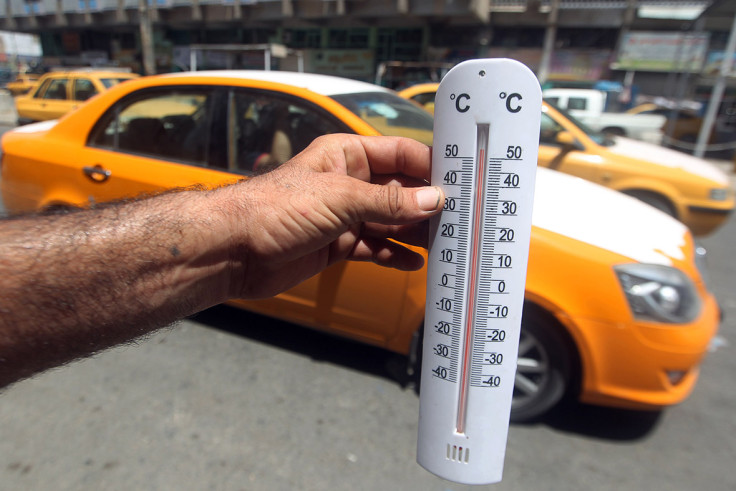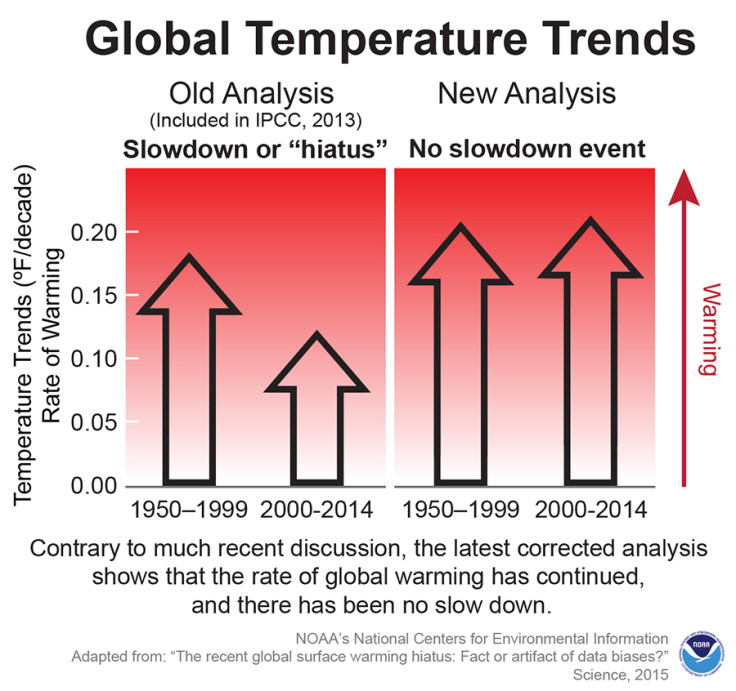Debunking climate change hiatus: There was never a slowdown in global warming

The global warming hiatus, slowdown, or pause thought to have taken place between 1998 and 2013 never happened – it was merely a result of faulty statistical methods, Stanford scientists have said. The team carried out a comprehensive assessment of claims about the slowdown to see if they stand up to "rigorous statistical scrutiny" and the answer they got back was an emphatic no.
The 'hiatus' is an unexplained slowdown in global warming often favoured as an argument among climate change deniers. The study, published in the journal Climatic Change and titled 'Debunking the climate hiatus' used a new statistical framework developed specifically for looking at geophysical processes like global temperature fluctuations.
Study co-author Noah Diffenbaugh said: "Our results clearly show that, in terms of the statistics of the long-term global temperature data, there never was a hiatus, a pause or a slowdown in global warming."
The team examined temperature data and the statistical tools used to analyse it. They found many of the techniques were not ideally suited to geophysical processes – ignoring spatial and temporal dependencies, for example.
They were also able to address the problem of the small number of data points we have for the supposed hiatus – most statistical tools need a lot of data points to draw conclusions. Stanford statistician Joseph Romano had invented a technique called subsampling over 20 years ago that allows researchers to see how variables have changed in the short term using limited data.

"In order to study the hiatus, we took the basic idea of subsampling and then adapted it to cope with the small sample size of the alleged hiatus period," Romano said. "When we compared the results from our technique with those calculated using classical methods, we found that the statistical confidence obtained using our framework is 100 times stronger than what was reported by the NOAA group."
The NOAA study published in Science had found many ocean buoys measuring sea surface temperatures in the last few decades gave cooler readings than measurements gathered by ships. Correcting the buoy measurements led them to conclude the hiatus does not exist.
The Stanford researchers applied their subsampling technique to temperature data and found the rate of global surface temperature did not stop or slow down between 1998 and 2013 in any statistically significant manner. They said their findings should go some way to reinstate the climate models that form the foundation for climate change predictions.
"Global warming is like other noisy systems that fluctuate wildly but still follow a trend," Diffenbaugh said. "Think of the US stock market. There have been bull markets and bear markets, but overall it has grown a lot over the past century. What is clear from analysing the long-term data in a rigorous statistical framework is that, even though climate varies from year-to-year and decade-to-decade, global temperature has increased in the long term, and the recent period does not stand out as being abnormal."
© Copyright IBTimes 2025. All rights reserved.





















